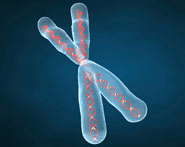


 النبات
النبات
 الحيوان
الحيوان
 الأحياء المجهرية
الأحياء المجهرية
 علم الأمراض
علم الأمراض
 التقانة الإحيائية
التقانة الإحيائية
 التقنية الحيوية المكروبية
التقنية الحيوية المكروبية
 التقنية الحياتية النانوية
التقنية الحياتية النانوية
 علم الأجنة
علم الأجنة
 الأحياء الجزيئي
الأحياء الجزيئي
 علم وظائف الأعضاء
علم وظائف الأعضاء
 الغدد
الغدد
 المضادات الحيوية
المضادات الحيوية|
Read More
Date: 2-5-2016
Date: 13-12-2015
Date: 10-4-2021
|
Amplified Fragment Length Polymorphism (AFLP)
AFLP (Figure ) combines RFLP (restriction fragment length polymorphism) and RAPD analyses.As with ‘DNA fingerprinting’, genomic DNA is digested with restriction enzymes. Oligonucleotide adapters are next enzymatically ligated to the ends of the DNA fragments and are designed so that the original restriction sites are not recreated following ligation. PCR primers are next designed and are complementary to the adapter sequences except that they extend one base into the intervening bacterial sequence (as in RAPD). Theoretically, the PCR will then amplify only 1/16th of all sequences with ligated flanking adapters. In a second PCR step, a new primer pair complementary to the flanks of the first PCR products but now extending 3 bp into the bacterial sequences is used to amplify a small amount of the first PCR reaction, thus theoretically reducing the sequence complexity by altogether 256-fold. The resulting fragments are then separated electrophoretically and can be visualised, e.g. when one
of the primers of the second PCR round is fluorescently labelled.

Figure : The principle of AFLP. The products are separated and visualised using gel electrophoresis and ethidium bromide and UV illumination. The 30- terminal nucleotide sequences of PCR primers are shown.



|
|
|
|
أكبر مسؤول طبي بريطاني: لهذا السبب يعيش الأطفال حياة أقصر
|
|
|
|
|
|
|
طريقة مبتكرة لمكافحة الفيروسات المهددة للبشرية
|
|
|
|
|
|
|
جامعة الكفيل تناقش تحضيراتها لإطلاق مؤتمرها العلمي الدولي السادس
|
|
|